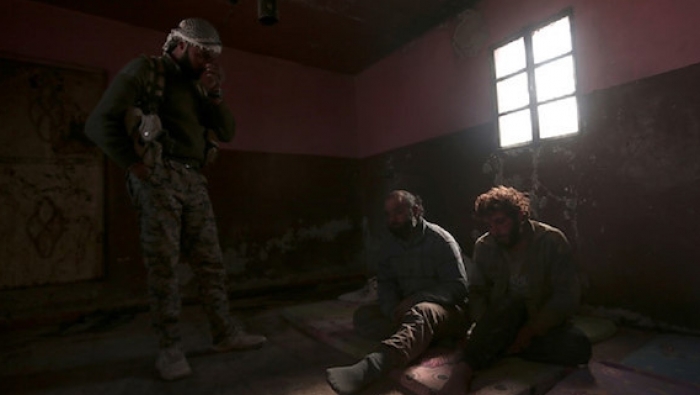BALADI NEWS
The New York Times offered special insight into the secret torture facilities of Bashar al-Assad's regime in Syria, in a report published Saturday.
While the Assad regime’s army has been fighting the rebel forces over territory, his government was waging an all-out war against its own civilians.
The exact number of civilians detained in these prisons is unknown, however, 128,000 Syrians are either considered to be detained or dead, according to the Syrian Network for Human Rights. Nearly 14,000 were killed from torture.
"The millions of relatives of missing detainees float in a social and psychological limbo," The Times wrote.
Now, as the regime is nearing the end of a brutal and bloody eight-year conflict, the rate at which people are being detained in the country is increasing.
“Last year the Syrian Network recorded 5,607 new arrests that it classifies as arbitrary — more than 100 per week and nearly 25 percent more than the year before,” The Times wrote in the report.
The newspaper found that government memos reveal that Syrian officials close to Assad had ordered mass detention and knew all about the atrocities taking place.
Syria has been locked in a vicious civil war since early 2011, when the Bashar al-Assad regime cracked down on pro-democracy protests.
Since then, hundreds of thousands of people have been killed and more than 10 million others displaced, according to UN officials.
In the past few months, the Assad regime has acknowledged the deaths of hundreds inside detention facilities, in what is a tactical strategy aimed at sending the message “We won, we did this, and no one will punish us,” according to the founder of the Syrian Network Fadel Abdul Ghany.
The newspaper documented numerous cases of torture at the hands of the regime.
Many of these cases took place at Saydnaya Prison, which is known in Syria as the place where prisoners were sent in mass to face executions.
One of the extreme cases was of Muhannad Ghabbash, a student from Aleppo, who was arrested multiple times in the beginning of Syria’s civil war.
After his third arrest, he faced a harsh series of beatings, and would sometimes “wake up naked in a freezing hallway,” and have a gun put into his mouth by an officer.
Another torture survivor said he witnessed “a teenager took 21 days to die after interrogators doused him with fuel and set him alight.”
One guard, who called himself Hitler, would organize a “sadistic dinner entertainment” in which he would force inmates to act as animals, making them bark like dogs or crow like roosters.
“The dog has to bark, the cat meow, the rooster crow,” Ghabbash told The Times. “Hitler tries to tame them. When he pets one dog, the other dog should act jealous.”
Inside the walls of these secret prison facilities, rape and sexual assault are also rampant.
Last year, a UN human rights commission report said that women and girls had been raped and sexually assaulted in at least 20 intelligence branches in the country, and men and boys in 15 branches.
The women who were not raped had reported facing groping, sexual insults, threats of rape, and cavity searches, according to NY Times.
The UN has also noted that the unhealthy conditions of the detention centers are so extreme and systemic that "they amounted to extermination, a crime against humanity."
Any hopes at holding the Assad regime accountable remain bleak, however, there is an increase in the movement to find justice through European courts. International arrest warrants for Ali Mamlouk, Assad’s national security chief, and Air Force intelligence director Jamil Hassan were issued by French and German authorities over the cases of torture and death in these prisons.
Source: Yeni Safak.

